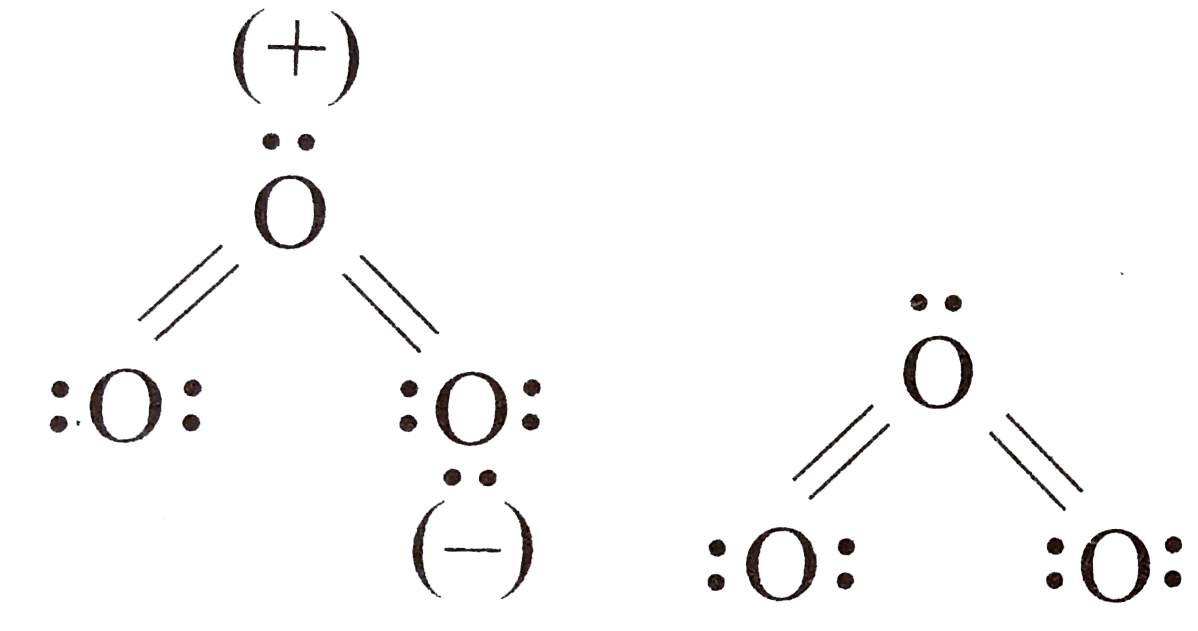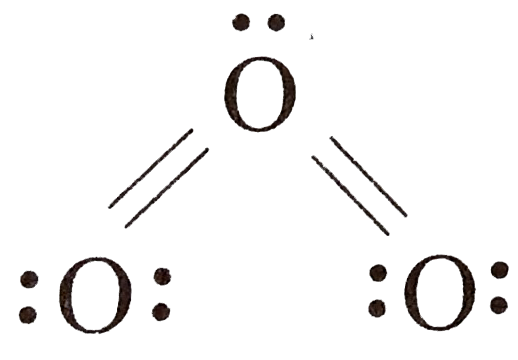Complete Solutions to Section B - Assertion Reasoning of chapter P BLOCK ELEMENTS ( GROUP 15,16,17,18) of Class 12 book with complete answers and questions
| Class 12 | CHEMISTRY |
| Chapter | P BLOCK ELEMENTS ( GROUP 15,16,17,18) |
| A2Z | Section B - Assertion Reasoning |
| Number Of Questions | 35 |
| Academic Year | 2023-24 |
Asseration:Although:Although `PF_(5),PCl_(5)` and `PBr_(5)` are known, the pentahalides of nitrogen have not been observed.
Reason: Phosphorus has lower electronegative than nitrogen.
View Solution`HNO_3` is a stronger acid than `HNO_2`
In `HNO_3`, there are two nitrogen to oxygen bonds, whereas in `HNO_2` there is only one.
View SolutionAsseration: `NH_(3)` can be dried by `CaCl_(2)`.
Reason: `CaCl_(2)` is a good dehydrating agent.
View SolutionAsseration: lowest oxidation number of `N`-family is `-3` and highest oxidation number of `N` is `+5`.
Reason: All the member of Nitrogen family show maximum oxidation number `+5` and minimum oxidation number `-3`.
View SolutionAsseration: Nitrogen forms `H_(2)N-NH_(2),N_(2)` and `N_(3)^(-)` ions whereas phosphorus form `P_(4)` molecule.
Reason: Nitrogen can form of three `N-`atoms only, `P` has four catenated atoms.
View SolutionAsseration: The abnormality in `b.pt.` of `NH_(3)` in hydrides of `N-`family is due to `H-`bonding.
Reason: The boiling point of hydrides of `N-`family shows the order: `NH_(3)gtBiH_(3)gtSbH_(3)gtAsH_(3)gtPH_(3)`.
View SolutionAsseration: The halogens develop`+ve` charge on `N`-atom and thus more `+ve` charge is devloped in `NF_(3)` amd therefore thendency to loose electron pair decreases.
Reason: The basic nature of trihalides of nitrogen decreases from `NF_(3)` to `NI_(3)`.
View SolutionAsseration: `N` in `NO_(2)` and nitrolic acid has `+4` and `+3` oxidation number respectively.
Reason: `NO_(2)` is acid anhydride of nitroxylic acid.
View SolutionAsseration: Number of `P-O-P` bonds in cyclotrimetaphosphoric acid is `3`.
Reason: Number of `P=O` bonds in cyclotrimetaphosphoric acid is three.
View SolutionAsseration: `NH_(3)` and `PH_(3)` differ from each other in their reaction with `CuSO_(4)` or `AgNO_(3)`.
Reason: `PH_(3)` acts as oxidising agent in these reacrion but `NH_(30` not.
View SolutionAsseration: The elctronic structure of `O_(3)` is:

Reason: structure is not allowed because octet around `O` cannot be expanded

View SolutionAssertion: Superoxide ion is paramagnetic whereas peroxide ion is diamagnetic.
Reason: Superoxide ion `[O=O]^(-)` has one unpaired electron whereas peroxide ion `[O=O]^(-)` has no unpaired electron.
View SolutionAssertion: Both are dibasic and permonosulphuric acid does not exit in free state but its salts are reducing agent, whereas perdisulphuric acid salts are oxidant.
Reason: Number of perdisulphuric acid are `1` and `2` respectively.
View SolutionAsseration: The thermal stability of hydrides of oxygen family decrease with molecular weight.
Reason: The decomposition of `M-H` bond requires lesser energy in `O-H` than `S-H`.
View SolutionAsseration: Number of `S-S` bonds in `H_(2)S_(n)O_(6)` is (n-1).
Reason: `H_(2)S_(n)O_(6)` shows `HO_(3)S-underset((n-2))(S)-SO_(3)H`
View SolutionAsseration: `3SnCl_(2)+6HCl+O_(3)rarr3SnCl_(4)+3H_(2)O` is possible reaction showing oxidising nature of `O_(3)`.
Reason: `O_(3)` whenever used as oxidising agent essentially liberates `O_(2)`.
View SolutionAsserarion:Bleaching action action of `SO_(2)` is temporary and by reduction.
Reason: The colour of material is regained due to oxidation by air.
View SolutionAsseration: Cyclic trimer of `SO_(3)` possesses have six membered hetero-cyclic chains made up of `S` and `O`-atoms
Reason: Cyclic trimer of `SO_(3)` is referred as `gamma-SO_(3)`.
View SolutionAssertion: `F` atom has less negative electron gain enthaply than `Ci` atom.
Reason: Additional eletrons are repelled more effectively by 3 p-electronic in `Ci` than by `2` p-electrons is `F` atom.
View SolutionAsseration: `F-F` bond in `F_(2)` molecule is strong.
Reason: `F`-atom is small in size.
View SolutionAsseration: `HF` forms two series of salts but `HCl` not.
Reason: `F`-atom is more electronegative than `Cl`-atom.
View SolutionAsseration: Iodine does not displace `Cl_(2)` or `Br_(2)` from their chlorides and bromides but displace them from their oxo-salts.
Reason: `E_(op)^(@)" of "I_(2)gtE_(OP)^(@)" of "Cl_(2) " or "Br_(2)`
View SolutionAsseration: A fresh stain of iodine is washed with hypo solution. Reason: Hypo is a bleaching agent and it oxidises`I_(2)` to `I^(-)`.
View SolutionAsseration: Liquid `I_(2)` conducts current very slightly.
Reason: Iodine in liquid state show partial auto ionisation.
View SolutionAsseration: Liquid `HF` is used as non-aqueous solvent and many acid-base reactions occur in this solvent system.
Reason: Liquid `HF` undergoes self ionisation.
View SolutionAsseration: Mineral acids on dissolving in liquid `HF` acts like a base.
Reason: Liquid `HF` acts as an acid and posses strong tendency to donate proton.
View SolutionAsseration: The reaciton between `HClO_(4)` and liquid `HF` is: `HClO_(4)+HFrarrClO_(4)^(-)+H_(2)F`
Reason: Liquid `HF` acts as base.\
View SolutionAsseration: `ClO_(2)` possess old number of electrons.
Reason: `ClO_(2)` dimerises to procvide the pairing of odd electron in it like other odd electron m olecules.
View SolutionAsseration: Iodine chloride acts as chlorinating as well as iodinating agent.
Reason: The nature of `ICl` to acts as chlorinating `(ICl_("vapour"))` or iodinating `ICl "in nitrobenzene")` agent depends upon the conditons.
View SolutionAssertion: All the zero group members posses 8 electron in their outermost subshell.
Reason: due to completely filled outermost shell, the zero group members are less reactive or almost inert.
View SolutionAssertion: All clatharate compound of noble gas are the compounds in which the molecules of noble gases are trapped in cavities in te crystal lattice of other compounds.
Reason: He and Ne having smaller size do not form clatrate compound molecules are small because are small because their ehough to escape from cavities.
View SolutionAsseration: The first real compound of the noble gases in `1962 "was" Xe^(+)[PtF_(6)]^(-)`.
Reason: The discovery was based on the basis of comparable ionisation energy of `O_(2)` and `Xe` and a compound `O_(2)^(+)[PtF_(6)]^(-)` was prepared by Bartlett which was later on reported to be `[XeF]^(+)[Pt_(2)F_(11)]^(-)`.
View SolutionAsseration: The geometry of `XeO_(3)F_(2)` is trigonal bipyramidal.
Reason: `Xe` shows `sp^(3)d` hybridisation with three oxygen atoms at equatorial position and two `F` atoms at axial positions.
View SolutionAsseration: On dissolution of xenates, `[HXeO_(4)]^(-)` in alkaline solution perxenate and `Xe` are obtained.
Reason: Xenates, `[HXeO_(4)]^(-)` shows disproportionation in alkaline solution.
View SolutionAssertion: Perxenate solutions are powerful oxidatns.
Reason: these in aqueous solution release `O_(2)`.
View Solution
Section B - Assertion Reasoning questions and complete solutions for chapter P BLOCK ELEMENTS ( GROUP 15,16,17,18) of A2Z CHEMISTRY (HINGLISH) of Class 12
All Exercises from A2Z Class 12 CHEMISTRY P BLOCK ELEMENTS ( GROUP 15,16,17,18)
- AIIMS Questions
- AIPMT/NEET Questions
- Assertion-Reasoning Questions
- Compound Of Oxygen (Group 16)
- Compound Of Sulphur(Group 16)
- Compounds Of Nitrogen (Group15)
- Compounds Of Phosphorus (Group15)
- Exercise
- Florine, Chlorine, Bromine, Iodine, And Halogen Acids (Preparation And Properties) (Group 17)
- General Physical And Chemical Properties (Group 17)
- General Properties And Fluorides Of Xenon (Group 18)
- Group 17 (Halogen Family)
- Group 18 (Nobel Gases)
- Oxides, Oxoacids, Polyhalides Ions, Pseudohalides And Interhalogen Compounds
- Physical And Chemical Properties (Group 15)
- Physical And Chemical Properties (Group 16)
- Section B - Assertion Reasoning
- Section D - Chapter End Test